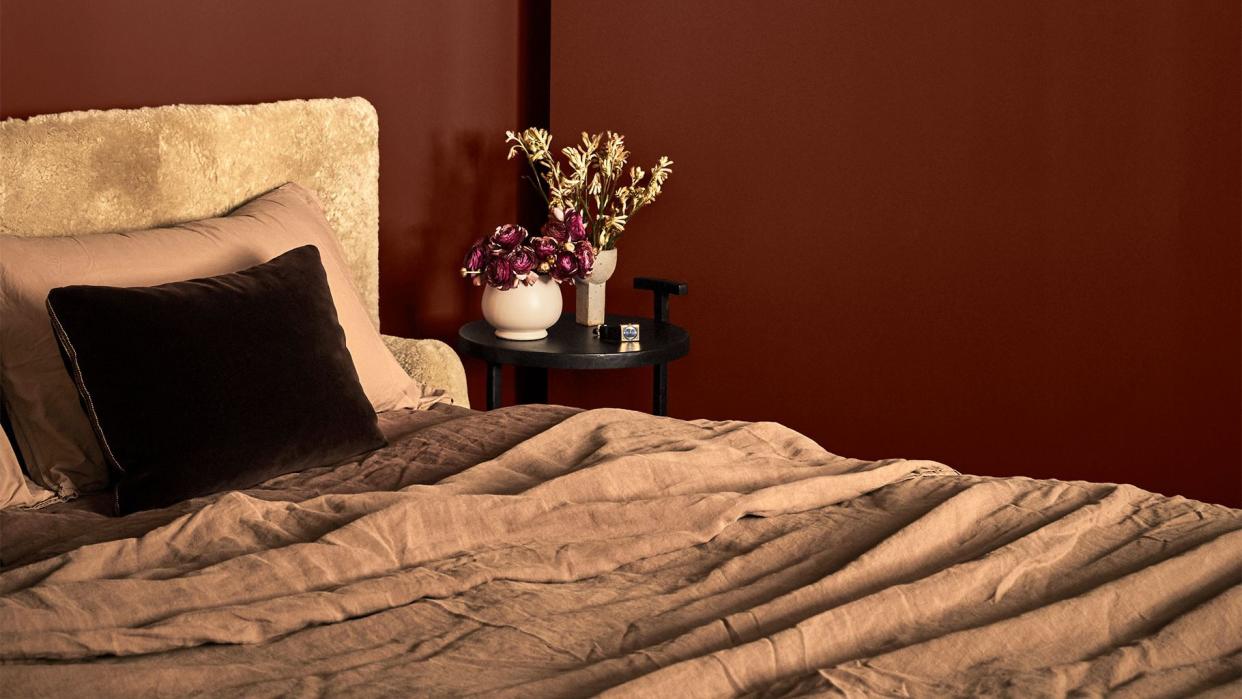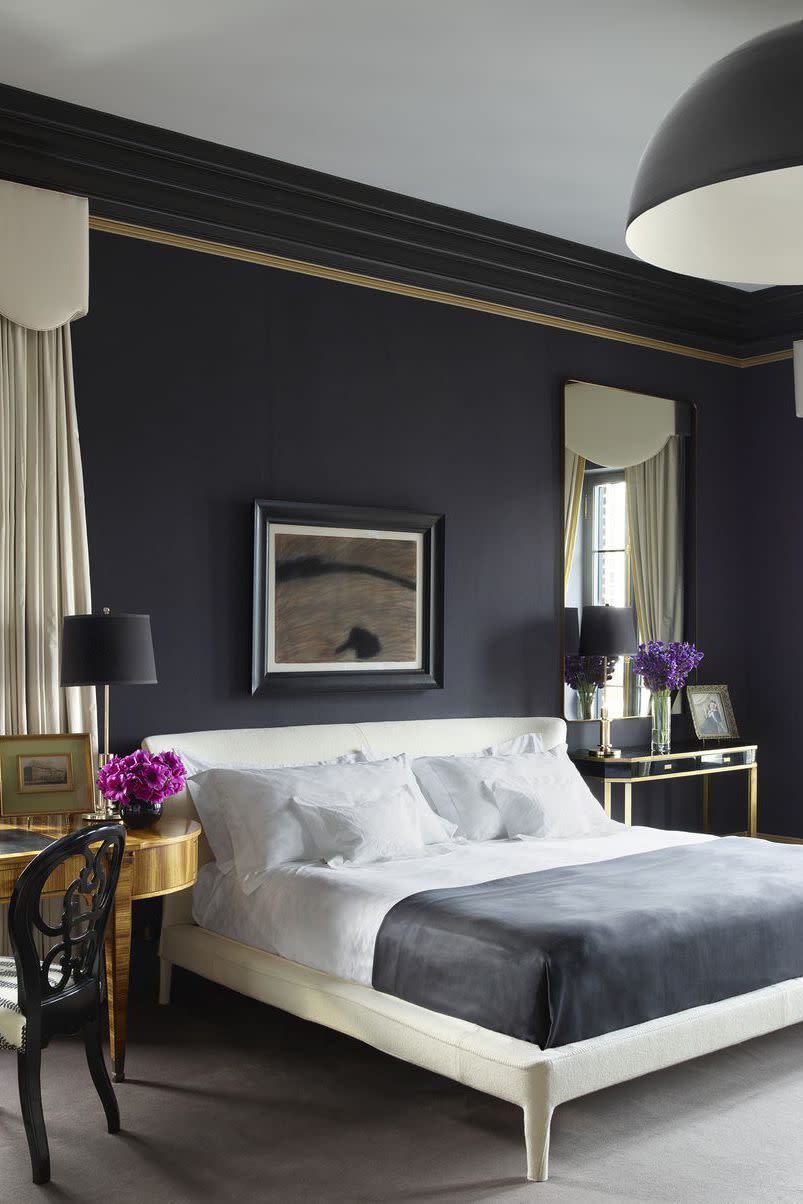Read This Before Choosing Satin vs. Eggshell Paint

So you’ve found the perfect paint color for your home improvement project, whether that’s refreshing your walls, giving your drab kitchen cabinet that perfect refresh, or making your trim pop. But—before you pick up that brush—have you considered your paint’s finish? Eggshell and satin are the most popular options out there because they are low maintenance, durable, and have just the right amount of luster. But what, exactly, is the difference between the two? And how, precisely, do you choose the right one?
First and foremost, you must consider lighting. “It has a lot to do with how much light the space receives,” Benjamin Moore’s color marketing and development manager Hannah Yeo tells ELLE DECOR. “Higher sheens will reflect the most light, while low sheens will absorb light. Different levels of sheen can affect how colors appear and add dimension to rooms.”
You should also consider how you’re using the room. “A general rule of thumb is the higher the sheen, the tougher the finish,” says Patrick O’Donnell, Farrow & Ball’s international brand ambassador. Those with kids or pets, for instance, may want to choose a glossier satin finish.
Still, Yeo adds, both satin and eggshell paints “have a durable quality that makes them popular, and it ultimately comes down to the look you’re trying to achieve.”
Ready to finalize your paint? Ahead, you will find a more in-depth breakdown of how to choose between satin and eggshell paint—and achieve the room of your dreams.
Eggshell vs. Satin: What are the main differences?
This may seem obvious, but eggshell paint gets its name from its resemblance to the shell of an egg, which means it creates a relatively nonshiny, matte surface. Satin, on the other hand, is more lustrous but not quite as shiny as gloss paint. Satin paint might set you back a few extra bucks per gallon, but—per Farrow & Ball’s O’Donnell—its more durable finish will give you a longer-lasting paint job and, ultimately, more bang for your buck.
Overall, however, it comes down to personal preference, the atmosphere you are trying to accomplish, and of course, budget.
Eggshell Paint

Eggshell paint finishes are low luster with a very subtle sheen. Despite its flatter qualities, it will still reflect and bounce light throughout a room, creating depth without appearing overly shiny.
Appearance of Eggshell Paint
Eggshell paint provides a soft sheen that can be emphasized with brighter lighting or toned down with dimmer lighting. It is the lowest luster option before flat or matte finishes.
Durability and Performance of Eggshell Paint
Because eggshell is less lustrous than satin, it is also slightly less durable. That being said, it will still hold up better than flat or matte finishes. Eggshell paint is a great option for walls in medium- to low-traffic areas and can be easily cleaned.
When to Use Eggshell Paint
Eggshell is commonly used in living rooms and dining rooms, as it does not pick up dirt easily. Pro tip: If your walls have bumps or imperfections, an extra coat of eggshell can disguise them more easily than satin or high-gloss finishes.
Satin Paint

A satin finish has a beautiful luster that is often described as appearing velvety. It is slightly less lustrous than semigloss and can appear to be both flat and glossy, depending on the lighting in the room. Satin has a slightly higher sheen than eggshell, meaning that it is more reflective and durable.
Appearance of Satin Paint
While satin finishes do have a degree of luster, they are more commonly described as a glow than a shine. Satin is a great choice if you are looking to create an understated depth in a space or to enliven the paint color you choose.
Durability and Performance of Satin Paint
Satin paint is very durable, making it great for high-traffic areas. It can easily be cleaned, though it can lose its sheen if scrubbed too roughly. It is advised that you clean it with a wipe and avoid abrasive scrubs.
When to Use Satin Paint
Because of its durability, many people choose a satin finish for bathrooms, kitchens, and kids’ rooms. Satin is also a popular choice for trim, especially if you want to emphasize the architecture of a space. If you are using a satin finish, make sure your walls are smooth and blemish-free, as the luster of it will emphasize any imperfections.
You Might Also Like
